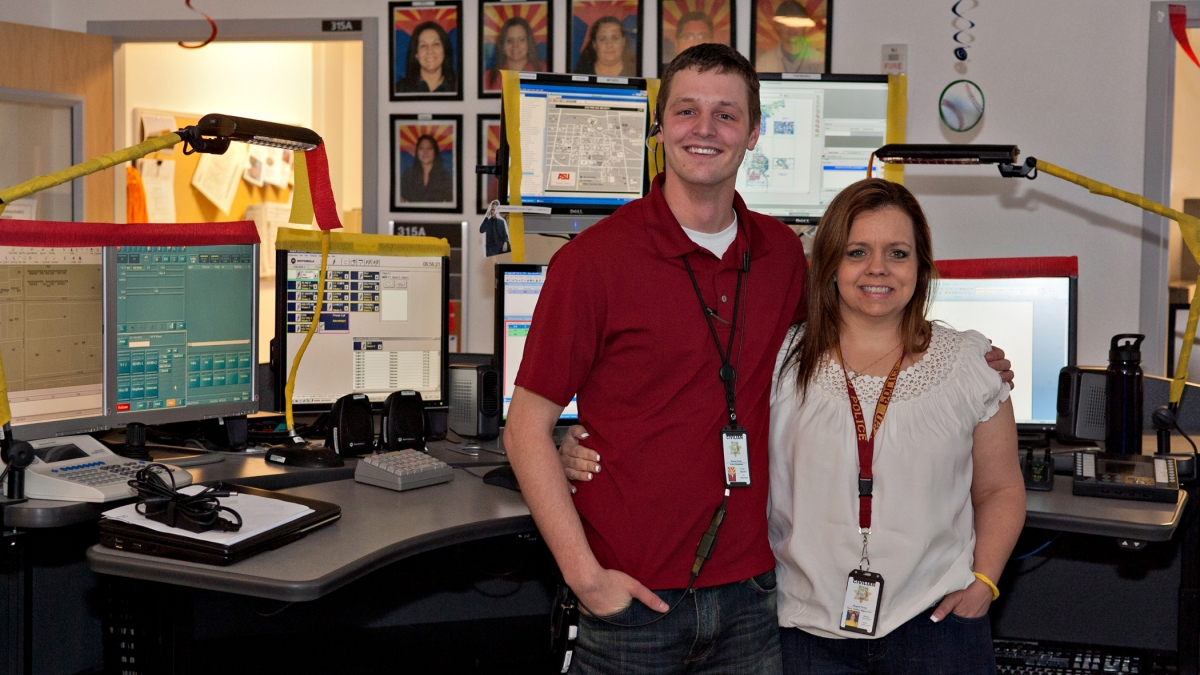Policing family affair in ASU Dispatch Department

Policing is a family affair in the police Dispatch Department at Arizona State University.
Dispatchers Angela Ferrin works the day shift while her stepson, Stewart, handles the night shift. Both share a love of police work with Angela starting as early as high school when she was in a work-study program and took care of administrative duties at the Tempe Police Department. Dispatchers such as Angela and Stewart Ferrin are honored this week as part of National Public Safety Telecommunicators Week.
Angela found a sense of unity and camaraderie at the Tempe Police Department that she missed after she found another job. She returned to the police department eventually to work as a 911 operator and was promoted to dispatcher. After raising her kids and being a stay at home mom, she was hired at the ASU Police Department as a dispatcher.
When Stewart returned from doing missionary work in Chile, Angela urged him to apply to the ASU Police Department for a dispatch job since he had always wanted to be a police officer.
“I thought we could solve two problems with one solution. He could get his foot in the door and get on the job experience,” Angela said.
Stewart wanted to be a police officer from the time he was a little boy. A prime role model in his life is his father, John Ferrin, who recently retired from the Tempe Police Department after almost 27 years.
Even though they don’t work the same shift, they occasionally see each other at work and both enjoy the challenges of working for the Dispatch department.
“It’s different every day,” Angela said. “You talk to lots of interesting people. If you can make a difference in just one person’s life, I think it’s great.”
Sometimes making a difference takes on a humorous tone like the time a pig was running loose at the Polytechnic campus and Dispatch had to find someone to call about catching swine.
“We knew who to call for bees, birds or dogs, but not a pig. All you could hear when you called the officer was the pig squealing in the background,” she said. Eventually the pig was reunited with its owner.
Other calls are simple matters like people who are unfamiliar with the campus and misplace their car. It’s especially gratifying to help in cases such as these especially when the person calling is elderly and they’re calling on a summer day.
Some reports that come into Dispatch are harder to handle when someone has experienced trauma such as a laptop theft.
“To a student, it’s a very big deal. They have all of their coursework and financial information on their laptop. That can be very devastating,” she said.